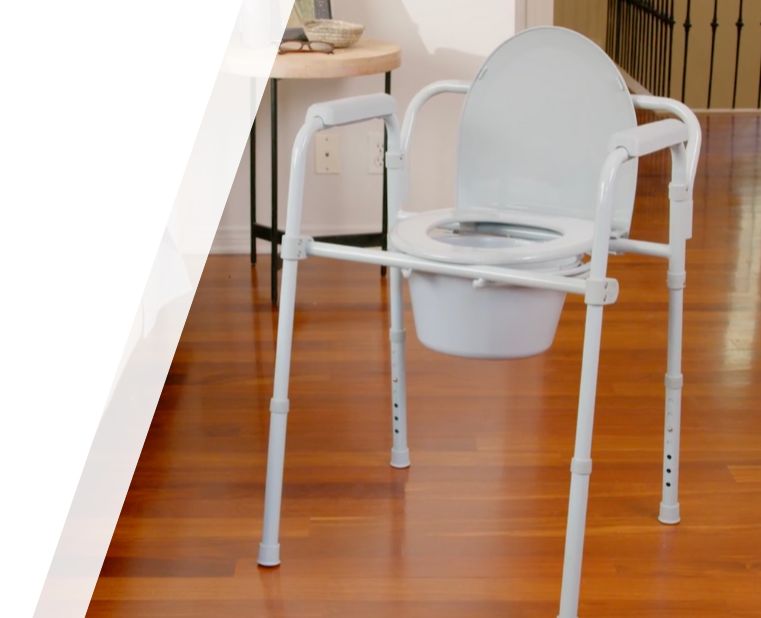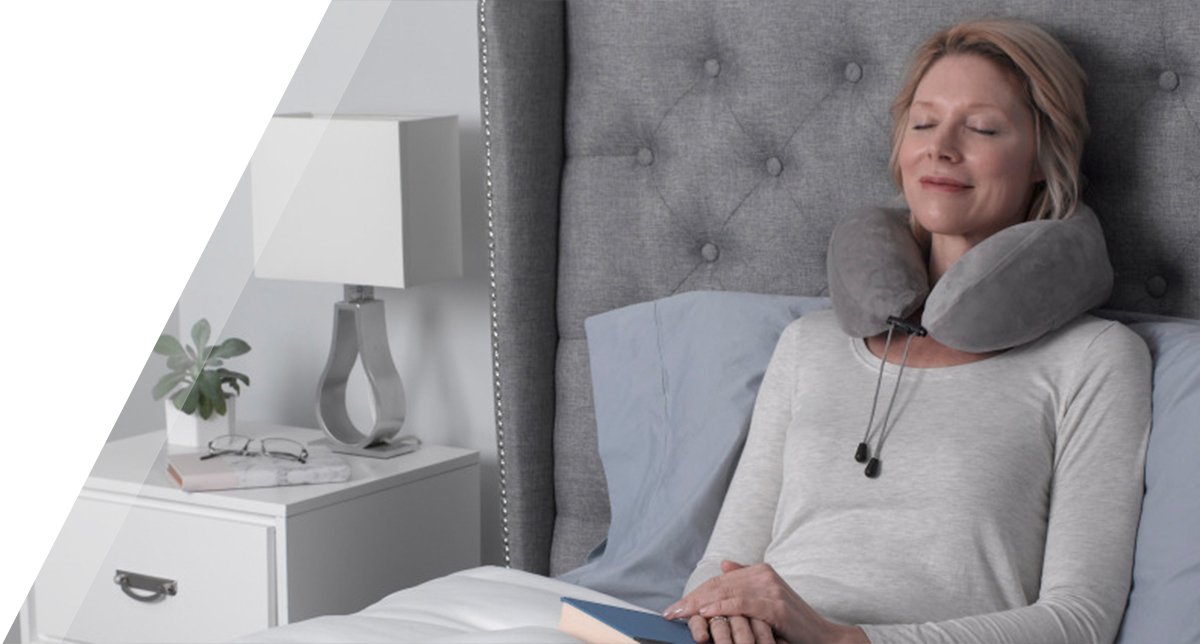You've probably noticed it happening—your spouse hesitating before getting up at night, or your mom or dad gripping the furniture a little tighter on the way to the bathroom. Or maybe it's you dreading asking for help getting to the bathroom yet again after surgery or injury. When standing becomes a balancing act, it's time to talk about a solution that can restore both safety and dignity: a commode chair.
These devices look like small, mobile toilets with a seat, frame, and removable bucket. By bringing the bathroom to the user, they take away the need for risky trips across the house and give people recovering from surgery or living with chronic mobility challenges a safer, more convenient way to manage toilet use.
The need for these aids is growing fast. It’s becoming more and more common to have a commode chair at home. Whether it’s for recovery after surgery, managing a chronic condition, or simply making daily life easier, these chairs offer comfort and support when it’s needed most. In fact, the number of people using them is growing so much that experts say over half a billion dollars will be spent on commode chairs by 2032. That shows just how many families are turning to them as a normal part of home care.
A bedside commode is not just a convenient seat. For many, it restores independence and dignity, reduces falls, and eases the work of family caregivers. Commodes help people do more on their own, stay safer, and make things easier for their caregivers. We’ll dive into how commodes and commode seats impact these issues and identify some of the different styles available. We’ll also cover tips for setup and cleaning, so everything stays comfortable and easy to manage.
Promoting Independence & Dignity with Bedside Commodes
Losing the ability to reach the bathroom can impact an individual’s confidence and self‑worth. A bedside commode addresses that fear by making toileting manageable without long, exhausting walks. One caregiving resource calls it a “beacon of independence and dignity for individuals grappling with mobility issues… it’s a lifeline that enables individuals to maintain their quality of life.” Working a commode into the home routine preserves privacy, reduces accidents, and encourages users to handle personal care on their own terms.
Taking care of these needs helps more than just the body; it can improve confidence and mood too. Bedside commodes positively impact self‑esteem and mental health because users can manage hygiene privately and securely. Being able to do this on their own helps people feel more in control and more involved in daily life. Caregivers, too, gain peace of mind when a loved one maintains autonomy during such personal tasks.
Modern commodes are built with comfort in mind. Some have adjustable seats and armrests. Others have wheels or raised frames that make it easier to sit and stand safely. These features help people stay independent and feel more secure. Many offer legs that can be adjusted so the user’s feet rest firmly on the floor, which improves balance and confidence. Models often resemble standard toilets, making them more intuitive than bedpans or diapers. Others sit on wheels, allowing a person who can propel themselves to roll over an existing toilet or into the shower. These features can be adjusted to fit different needs, helping people stay as independent as possible.
Enhancing Safety: Preventing Falls with Portable Toilets
Bathrooms are notorious for causing injuries. Wet floors, tight spaces, and nighttime trips create a dangerous combination, especially for older adults. UCLA Health estimates that about 80 percent of falls in the home occur in the bathroom. With age, falls become more serious; bones are more fragile and recovery takes longer. A commode beside the bed removes the need to navigate slippery floors or dark corridors, turning a high‑risk journey into a few safe steps.
Portable commodes are designed to provide stability. Non‑slip tips on the legs, wide bases, and armrests support users when sitting down or standing up. Having a commode can also reduce reliance on grabbing onto things towel racks or furniture that are not intended to support a person’s weight.
While general bathroom safety strategies include adding grab bars, better lighting and non‑slip mats, these modifications still require the person to walk into the bathroom. Bedside commodes serve as a preventative measure that keeps vulnerable individuals from entering this hazardous space in the first place.
Falls don’t just affect the person, they often lead to ER visits and big medical bills. More than 200,000 seniors are treated in emergency rooms each year for bathroom‑related injuries. By making toileting safer at home, commodes can help reduce these preventable incidents and the associated medical costs.
Caregiver Relief: How Commode Chairs Simplify Home Care
Family members and professional aides often bear the physical toll of helping someone to the toilet. Lifting, turning, and transferring a person places strain on the back, neck, and shoulders. The American Academy of Orthopaedic Surgeons reports that over 53 million Americans serve as home caregivers and that these body areas are the most commonly injured because of repetitive lifting and pulling. Reducing how often transfers happen and transfer distance can help preserve caregivers’ health.
Commode chairs can make life a lot easier for both the person using them and the caregiver. Having a toilet right next to the bed or chair means there's no need to walk down hallways or try to squeeze through tight spaces. Some models even have drop-arm sides, so instead of lifting someone, caregivers can help them slide over more safely and comfortably. For example, Drive Medical’s Bariatric Drop-Arm Commodeis built to be strong and easy to use. The armrest can be quickly released, making it easier to help someone move safely onto the seat and help cut down on lifting for caregivers.
Bathroom care is one of the toughest parts of caregiving. Trualta’s caregiver blog states that helping with daily care tasks in the bathroom is notoriously one of the most challenging duties because it is personal, high‑risk, and involves many steps. Wheeled commodes further streamline these tasks. By rolling the chair between rooms or directly into a roll‑in shower, caregivers can assist with bathing or toileting without repeated lifts. Wheeled chairs also cut down on transfers because users can remain seated while moving between bedroom, bathroom, and shower. Simplifying these routines preserves caregivers’ energy and makes it more feasible to care for loved ones at home.
Versatile Options: Choosing the Right Commode for Every Need
There is no one‑size‑fits‑all commode. As you shop for a commode, be sure to choose an option that is right for your needs:
- Standard 3‑in‑1 commodes function as bedside toilets, elevated seats, or safety frames over existing toilets.
- Bariatric commode models have higher weight capacities
- Pediatric commodes are smaller and more inviting for children.
- Drop‑arm commodes allow lateral transfers more easily
- Rolling commodes can sometimes double as shower chairs or transport chairs
- Wheeled commodes can be placed at the bedside or directly over a toilet, providing raised seat height, armrests, and backrests without renovating the bathroom.
With so many types available, people can pick the one that works best for their space and needs—whether that means using it by the bed or in the bathroom.
Lately, more commode chairs are being designed with everyday comfort in mind. Things like lighter materials, adjustable heights, and easier-to-use shapes are becoming more common, offering a wide variety of options for your lifestyle and helping people find options that fit their needs at home. Some commodes even include smart features like remote controls, fall sensors, or health tracking that can connect to other smart tools at home.
Plastic commode chairs are a popular choice because they’re lightweight and easy to clean. Some even come with built-in bidets to help with hygiene, like this model from Drive Medical, which supports more independence in the bathroom. Metal-frame options are also still used when extra strength or stability is needed.
When selecting a commode, consider the user’s weight, mobility level, bathroom layout, and whether a wheeled or stationary model suits daily routines. A properly matched commode maximizes safety and comfort while fitting seamlessly into the home.
Tips for Using & Maintaining a Bedside Commode at Home
Appropriate placement and maintenance ensure that a commode remains a safe and hygienic aid. Experts recommend positioning the chair close to the bed on a flat surface and keeping pathways clear of rugs and clutter. The area should be well-lit, and if the commode has wheels, the brakes must be locked before use. Adjust the height so the user’s feet touch the floor and the armrests support them when sitting or standing. Non‑slip slippers or shoes improve stability.
Establishing a regular toileting schedule, often every two to four hours, helps manage incontinence and reduces urgent trips. Keep necessary supplies like gloves, toilet paper, wet wipes, commode liners, and disinfectant within reach, and encourage clothing that is easy to remove. In 2024, NorthShore emphasised the need to “keep the area near the commode free from clutter,” and have supplies ready to streamline toileting.
Properly cleaning the commode after use is essential. WebMD advisesthe following best practices for emptying and cleaning the bucket after each use:
- Use household disinfectants suitable for plastic
- Rinse thoroughly and let the bucket dry.
- Wipe down the seat, lid, and frame regularly with disinfectant and allow them to air‑dry.
- Disposable liners can minimize mess and odors.
- Inspect the commode frequently for loose bolts, worn rubber tips, or cracks; secure or replace components as needed.
By following these practices, caregivers ensure that the commode remains safe, sanitary, and ready for use.
If you or someone you care for has trouble getting to the bathroom, a bedside commode can simply make everyday life a lot easier. It helps cut down the risk of falls, offers more privacy, and takes pressure off caregivers who might otherwise have to lift or guide someone across the house. Having one nearby can bring peace of mind, help everyone feel more at ease, and make daily routines safer and less stressful.
When picking a commode, think about things like how much weight it needs to hold, whether it should be easy to move, and how it will be used day to day.
Innovations like lightweight materials, drop‑arm mechanisms, and smart technology expand the options available. Once a suitable model is selected, careful placement, regular cleaning, and a predictable toileting schedule keep the chair safe and hygienic, and the process as stress-free as possible.
Drive Medical at Home offers a wide range of commodes and bathroom safety products to meet our patients’ needs and find what works best for them.


.png)

.png)



